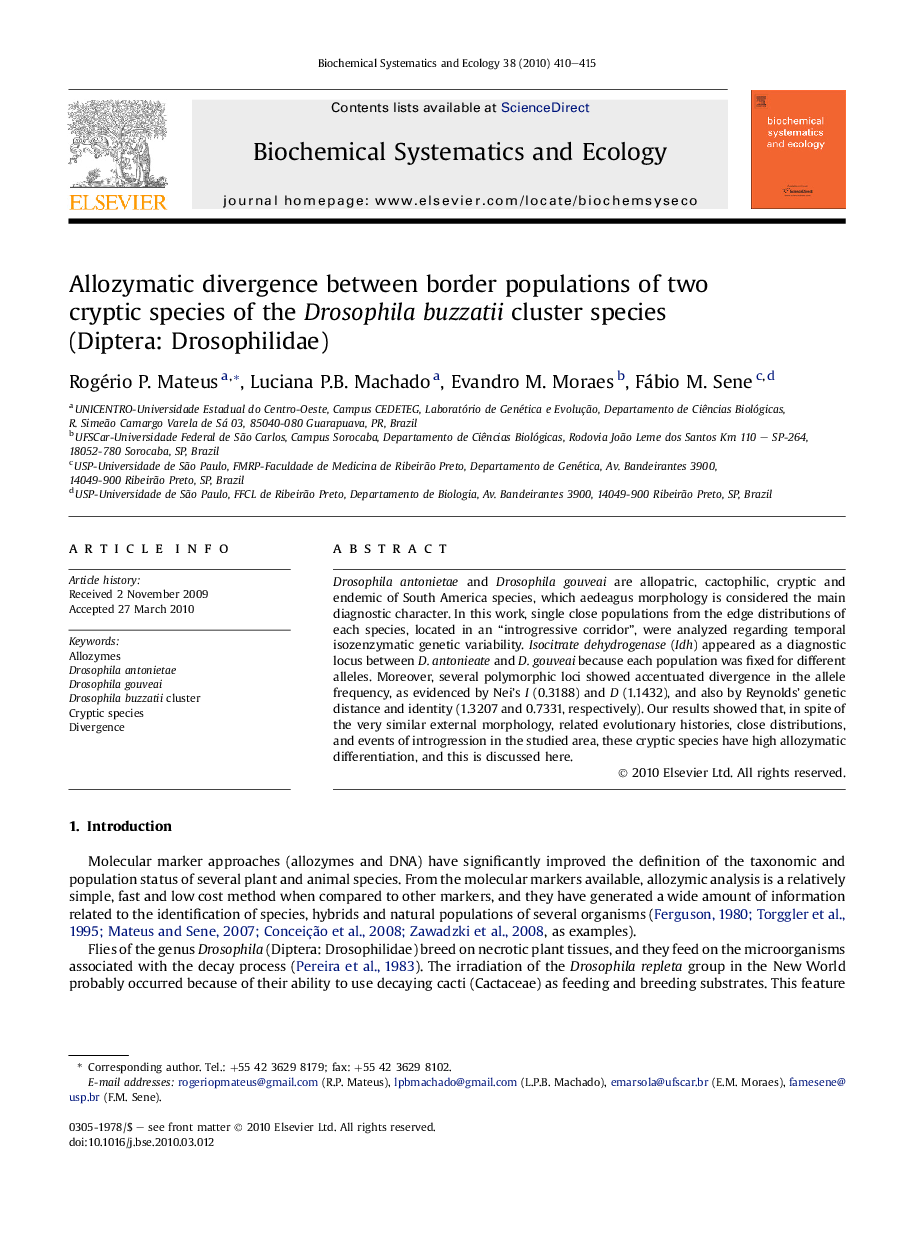| Article ID | Journal | Published Year | Pages | File Type |
|---|---|---|---|---|
| 1352079 | Biochemical Systematics and Ecology | 2010 | 6 Pages |
Abstract
Drosophila antonietae and Drosophila gouveai are allopatric, cactophilic, cryptic and endemic of South America species, which aedeagus morphology is considered the main diagnostic character. In this work, single close populations from the edge distributions of each species, located in an “introgressive corridor”, were analyzed regarding temporal isozenzymatic genetic variability. Isocitrate dehydrogenase (Idh) appeared as a diagnostic locus between D. antonieate and D. gouveai because each population was fixed for different alleles. Moreover, several polymorphic loci showed accentuated divergence in the allele frequency, as evidenced by Nei's I (0.3188) and D (1.1432), and also by Reynolds' genetic distance and identity (1.3207 and 0.7331, respectively). Our results showed that, in spite of the very similar external morphology, related evolutionary histories, close distributions, and events of introgression in the studied area, these cryptic species have high allozymatic differentiation, and this is discussed here.
Keywords
Related Topics
Physical Sciences and Engineering
Chemistry
Organic Chemistry
Authors
Rogério P. Mateus, Luciana P.B. Machado, Evandro M. Moraes, Fábio M. Sene,
